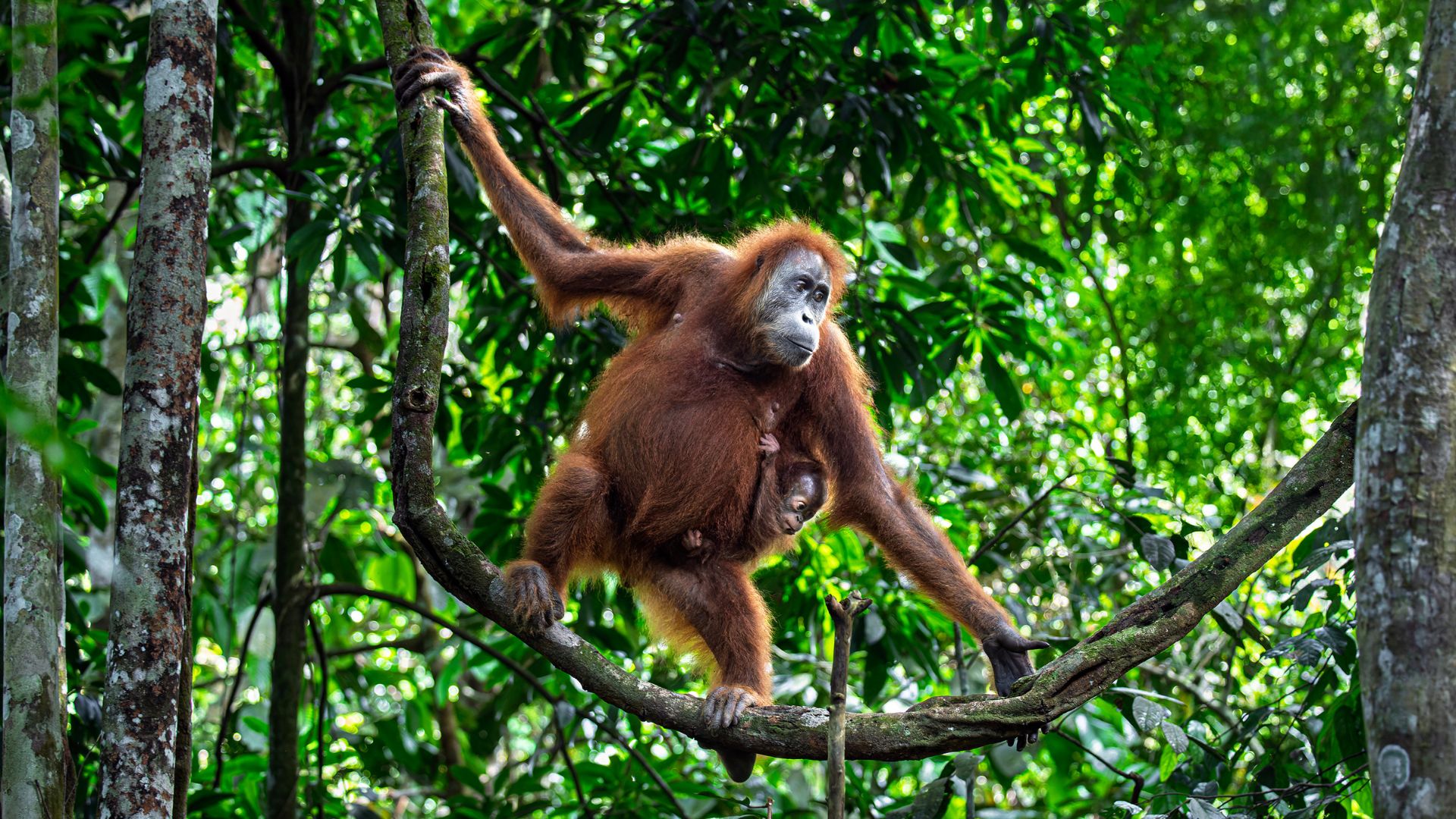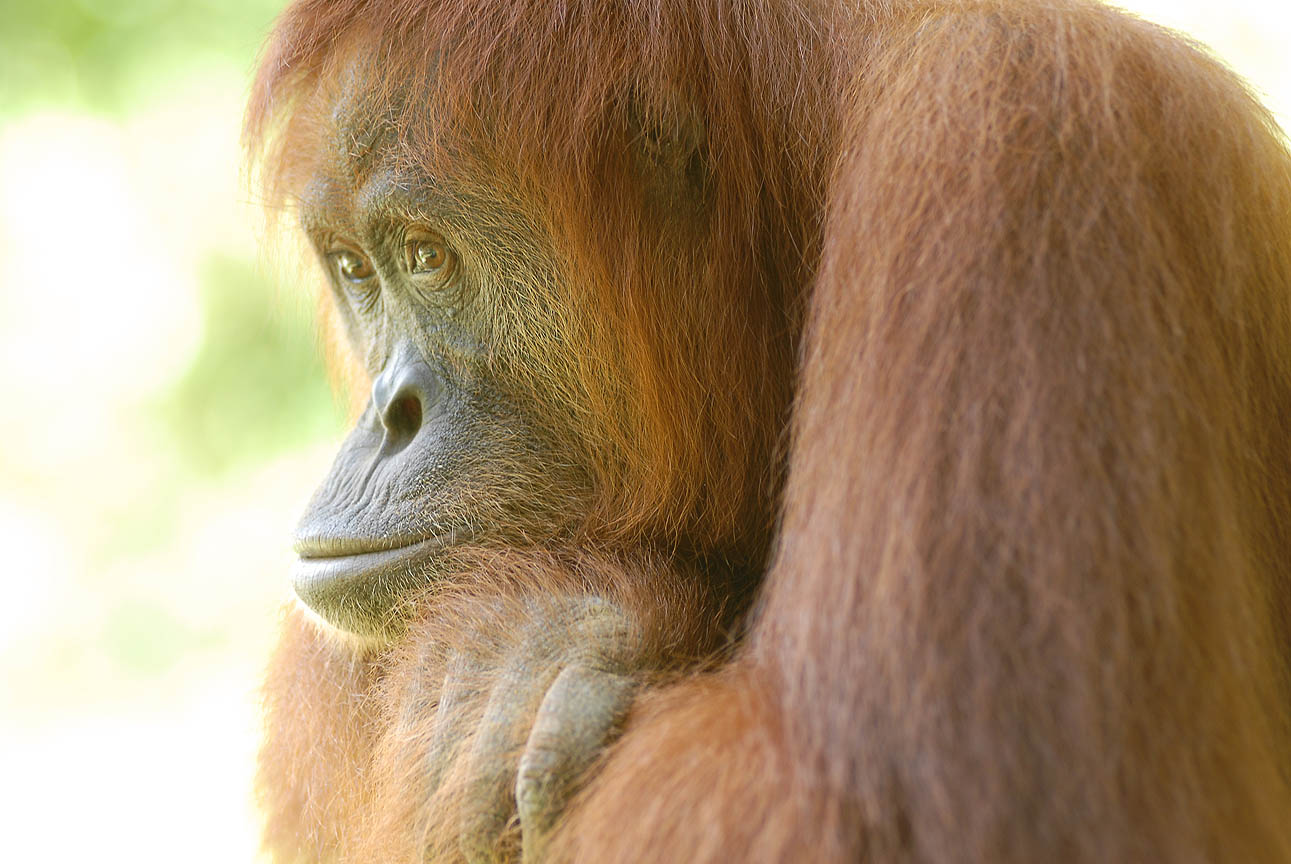
Credt: Zac Mills, the Wildlife Collective
A crucial aspect of orangutan conservation is population monitoring, as it allows us to efficiently and strategically allocate resources across key habitats. But counting orangutans poses a unique challenge.
Orangutans are arboreal; they live high up in the rainforest canopy and have low population densities. In Sumatra, orangutans rarely come to the ground due to the threat of tigers. Each night, they construct a new nest. But these nests blend in with the surrounding trees, making them difficult to spot. So what’s the solution?
The oldest and most widely used form of orangutan monitoring is human observation. This includes both direct observation of individuals and indirect monitoring through genetic materials and nests. But this comes with its own challenges. It is costly to deploy a field team to collect samples and generally, orangutans live in very remote areas.
Although we can infer population density from nest surveys, this requires an extremely well-trained team to ensure standardised observations. Even then, the challenging terrain and nest decay rate can result in different nest counts.
While orangutans live in tree canopies, and so it might make sense to survey them from the sky, this is difficult to do. Many nests are in lower branches, not just the canopy top, which varies by tree and individual orangutan. Helicopters are expensive and dangerous to operate, making traditional aerial survey methods impractical in this landscape.
Additionally, dense rainforests demand skilled drone operators and often require several drones to be operated at once. Researchers must survey vast areas, which is tough when working with short drone flights in remote locations. Thermal drones work best in cool mornings, which is not always practical due to operational limits. Therefore, aerial surveys must be combined with ground-based nest checks for accurate population estimates.
Camera traps are useful because they record continuously without disturbing wildlife. . However, their success really depends on where you put them. For orangutans, who spend most of their lives in the trees, this is a problem. Placing cameras high up in the forest canopy is incredibly difficult. The canopy is a complex, 3D space, making it much harder to position cameras effectively to capture these elusive apes.
Ultimately, the most effective way to protect orangutans is by bringing together a diverse range of data to develop a precise picture of the situation on the ground. This allows SOS and our partners to accurately identify conservation priorities, ensuring we allocate resources effectively and implement tailored, site-specific strategies.
This approach provides us with the foundations to continuously evaluate the progress and success of our conservation efforts, ensuring a thriving future for wild orangutans. Read more about our conservation approach here.
References: Koloski, van Kuijk, Ali Imron, Marhaento, Sartika Sari, irada, Zwerts (2025) “Orangutan population monitoring methods: Strengths, challenges, and opportunities” Biological Conservation, Volume 309, 111320, ISSN 0006-3207.
You can help protect Sumatra's Orangutans. Click to get updates
